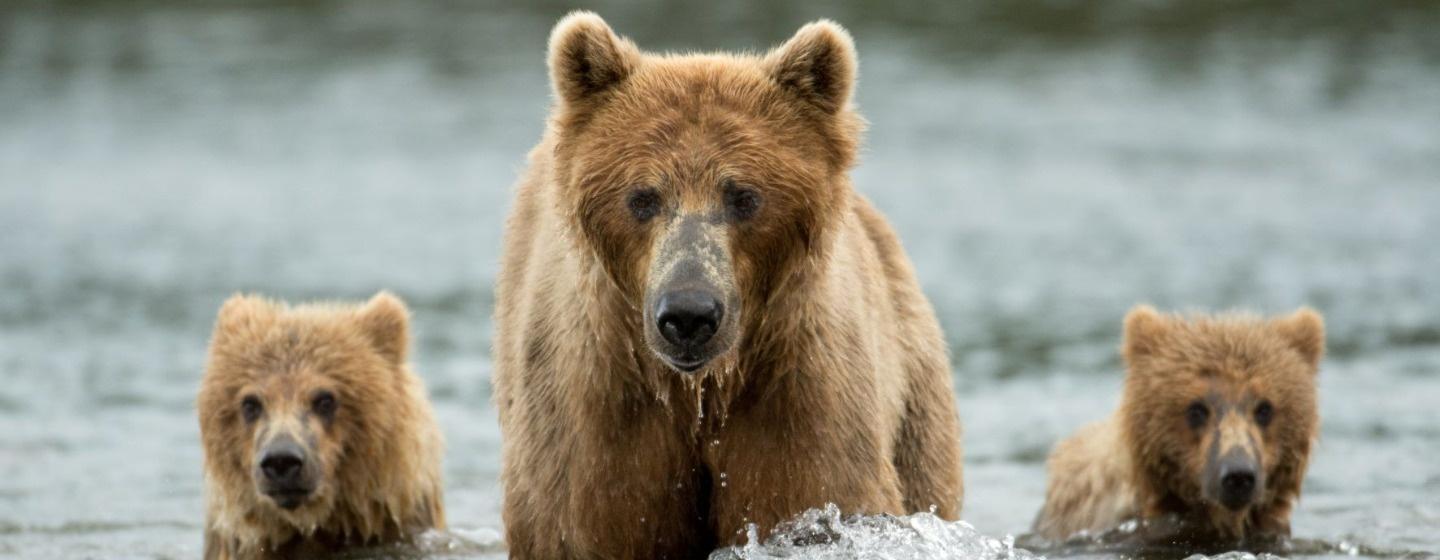Wilderness and nature programs are unique beasts.
While these programs are different from news and public affairs programming, producers still grapple with issues relating to the PBS Editorial Standards—especially the principles of transparency, fairness, accuracy, and accountability.
Transparency is important for any genre of programming, and the producers of NATURE found themselves dealing with this principle when they built a bear den to get footage of a grizzly and her cubs hibernating for the film “Christmas in Yellowstone."
The PBS Editorial Standards state, “While specific methods may vary by circumstance and platform, transparency means respecting that the audience is entitled to understand significant underlying editorial decisions.”
In this case, the producers’ decision to build a den and equip it with cameras was an important enough part of the story that they decided to make a web extra about how—and why—it was constructed and filmed at Washington State University’s bear research center, NATURE Executive Producer Fred Kaufman said.
Building a den was both practical and ethical because it was not possible to film hibernating bears in the wild without disturbing them. As the web extra explains, “The challenge was to create a den which would resemble one a grizzly could make in Yellowstone; that would allow good filming access; that would not interfere with the ongoing research on hibernation being conducted at WSU; and that would not disturb the bear and her cubs.”
Another unique production practice for wilderness and nature programs is that sometimes months of footage needs to be condensed into one scene. When doing so, producers must be fair to the audience by accurately depicting animal behavior.
In February 2019, “Wild Way of the Vikings” showed killer whales attacking a seal. It took two months to film that particular scene. Because only a single camera was used, it was not possible to film at once all the shots required to adequately demonstrate the attack. Instead, producers used shots from different attacks recorded at different times.
In such situations, Kaufman explained, producers generally avoid framing the story as though they are featuring the same animals throughout so as not to deceive the audience; instead, they focus on depicting particular animal behavior.
The killer whale scene, for example, “would be virtually impossible to film with one camera. So you do piece it together over time and create this one event,” Kaufman said. Such a practice is acceptable, Kaufman noted, provided that the scene is used to give viewers an accurate sense of how animals behave in the wild.
In rare cases, a film may use a composite character based on several animals to educate viewers, provided that the set-up is clear. One example is “Snow Bears,” a PBS and BBC co-production that tells the story of a polar bear family with cubs leaving their den for the first time and making the journey to the sea.
Kaufman said it would have taken several years (and a couple of million dollars) to film one family. So producers filmed multiple polar bears and presented them in the story as one family. Kaufman described this practice as “very untraditional for us.”
To avoid deceiving the audience, producers decided to include narration at the top explaining that the film was a dramatization rather than a documentary, with the following language included at the end: “Footage of more than one bear family was used to tell the story of a mother and her cubs.” In addition, the film’s online description states that the program is a “dramatized story.”
“The credibility of content is jeopardized whenever the audience or a source is deceived or might feel deceived,” the PBS Editorial Standards state. The use of labels and other visual or verbal disclosures can avoid such deception and allow the audience to better understand, and make informed judgments about, content.
“Thirty-seven years of NATURE, we’ve built up a reputation and a trust and I didn’t want anybody to think we were trying to get something over on anybody,” Kaufman said. “I wanted to be very upfront with it, very obvious with it, because it’s not a documentary. It’s a real dramatization. And, you know, people coming to watch NATURE aren’t expecting that. So it needed to be pointed out.”
Another challenge for these programs is how to portray scenes involving prey and predators without being gratuitous.
Deciding how much of an animal’s death to show, and for how long, can be tricky. NATURE producers don’t want to sanitize the footage to the point that they are not showing the animals accurately.
“When somebody is disturbed or uncomfortable with what they’re seeing, they should be,” Kaufman said. “Animal deaths in the wild are very disturbing.” But, he added, there’s a limit to how much the program will show out of respect to the audience.
Kaufman gave a vivid example from a recent trip to Africa, where he saw a lion kill a warthog. It was a long, gory thing to witness. “It’s not pleasant,” Kaufman said. “Now we’re not showing 15 minutes of that. We’re cutting away and coming back and the warthog is dead.”
The PBS Editorial Standards explain that “while controversial and sensitive material may need to be included in PBS content, material that is gratuitously offensive should not be included unless it is essential to understanding the matter at hand … Material that is included merely to shock or draw attention and that does not impart valuable information is gratuitous.”
Contact Standards & Practices at standards@pbs.org



